A dive into Hanoi’s heart reveals the enigmatic One Pillar Pagoda, a fascinating blend of history, architecture, and spirituality. Originally constructed in 1049 by Emperor Ly Thai Tong, inspired by a divine vision, the pagoda stands as a profound symbol of purity and enlightenment. Its design, emulating a lotus flower emerging from water, has withstood the test of time, reflecting Vietnam’s enduring cultural legacy. Journey deeper and discover its storied past, unique architectural traits, and unparalleled spiritual significance within not just Hanoi, but the broader tapestry of Vietnamese heritage.
Watch the video summarizing the article “One Pillar Pagoda Hanoi: Discover Vietnam’s Iconic Lotus Landmark”
History of One Pillar Pagoda
The One Pillar Pagoda’s history is steeped in legend and reverence, dating back to 1049. Emperor Ly Thai Tong erected this pagoda inspired by a vision of the Goddess of Mercy. Over centuries, it has withstood trials, including colonial destruction, symbolizing resilience and spiritual purity for Vietnamese people.
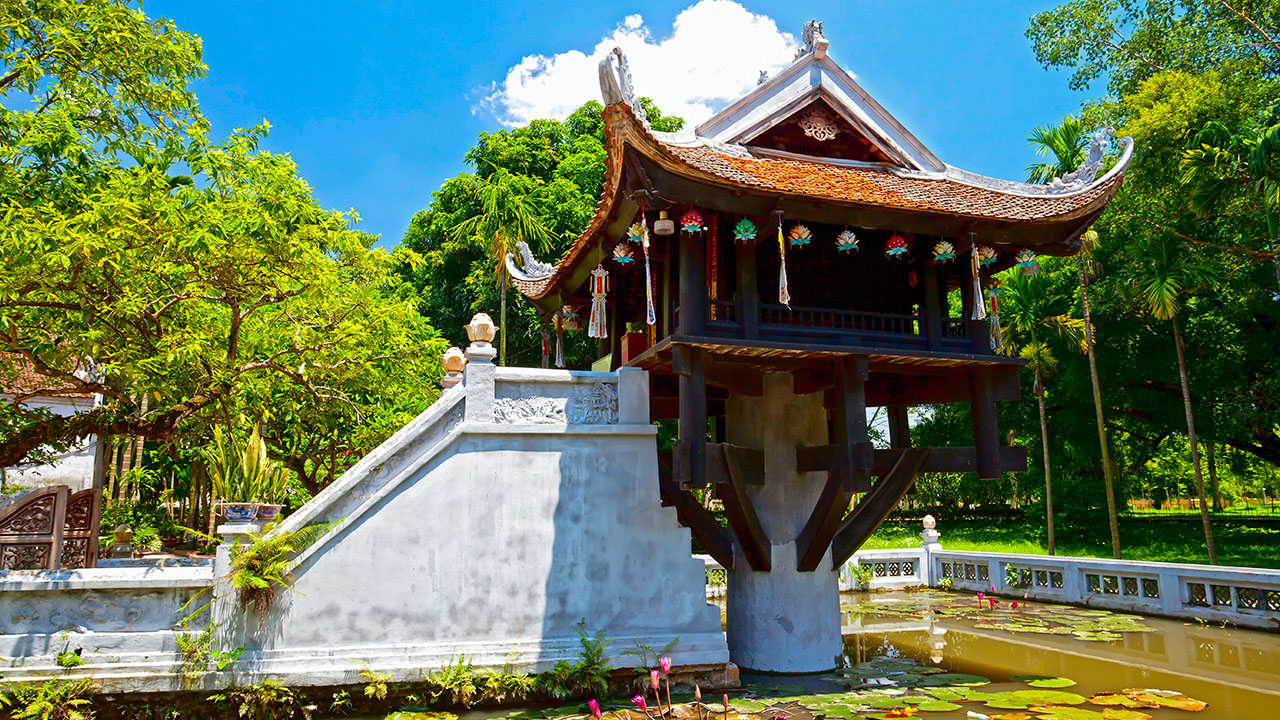
Origin of the One Pillar Pagoda
The origin of the One Pillar Pagoda is both mythologically rich and architecturally unique. It was conceived by Emperor Ly Thai Tong after experiencing a divine dream of Avalokiteshvara, seated on a large lotus, handing him a son. This vision not only prompted the construction but also inspired its lotus-like design a deep-seated symbol in Buddhist culture, representing purity amidst adversity.
Understanding the architecture requires appreciating its symbolic elements. The pagoda rises on a single stone pillar approximately 4 meters tall resembling a lotus stalk supporting a small wooden shrine that mirrors a radiant lotus. The surrounding square pond completes the ensemble, mimicking the serene beauty of a lotus floating in tranquil water. This unique arrangement symbolizes spiritual elevation, an idea rooted deeply in Buddhist philosophy, signifying how purity can rise above adversity.
Legends speak volumes about the location a calm and reflective space enhancing its spiritual allure. This tranquil setting amplifies its significance as a Buddhist sanctuary, inviting meditation and prayer. Such spaces are rare, embodying not just an architectural feat, but a resonating spiritual experience, drawing pilgrims and tourists alike.
Structurally, the pagoda has evolved through numerous reconstructions. Its original wooden framework was replaced with more enduring materials post the damage in 1954. Despite these modifications, the pagoda maintains its aesthetic integrity, echoing the original vision. The integrity of its historical design, despite adaptations, speaks to its cultural importance and showcases Vietnam’s dedication to preserving its national treasures.
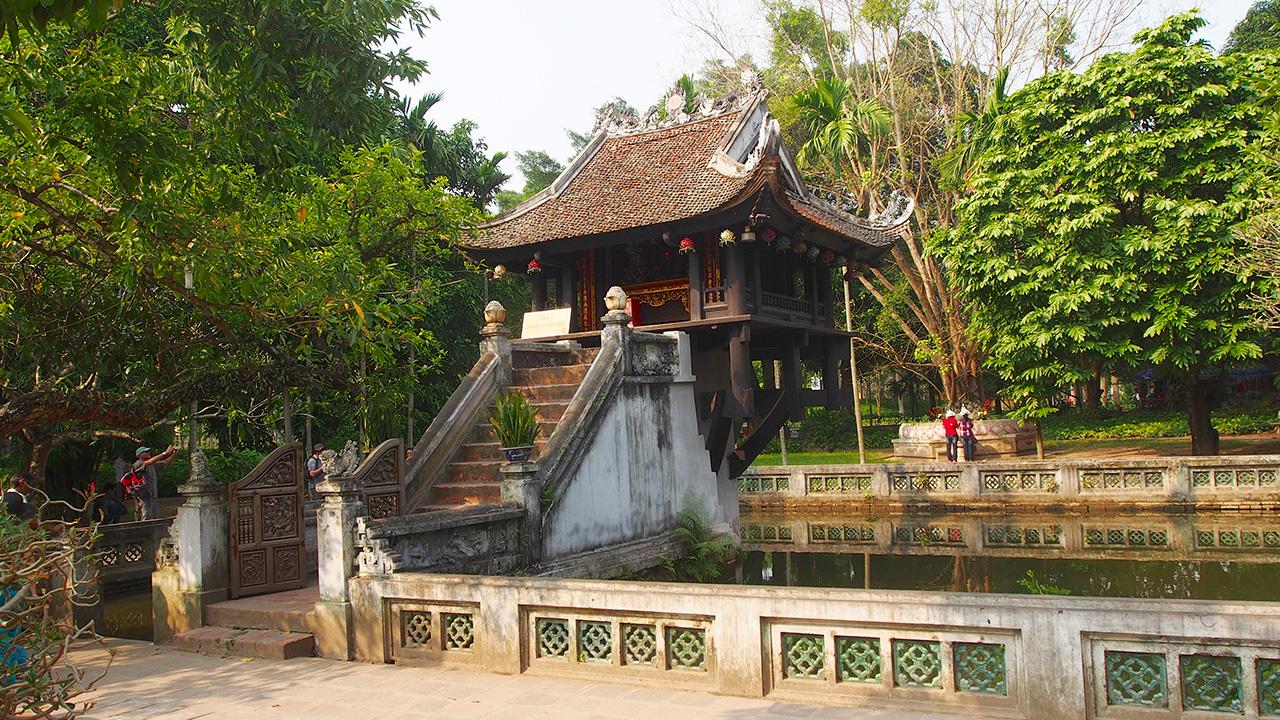
Historical Events and Renovations
The timeline of the One Pillar Pagoda is dotted with significant events and renovations that mark its resilience and historical significance. Initially constructed in 1049, it encountered substantial damage during the French colonial era, particularly in 1954. This wartime destruction led to a concerted effort by the Vietnamese to reconstruct the pagoda, culminating in 1955. This restoration preserved its hallmark lotus design, ensuring its place as a national symbol.
The 1955 reconstruction utilized reinforced concrete to better withstand both time and elements, marking a turning point in its architectural timeline. This shift from the original wooden materials not only fortified its structure but also reflected a blend of ancient design with modern resilience. Following the reconstruction, it was designated as a National Historic Heritage site in 1962, underscoring its cultural value.
The pagoda’s historic journey is emblematic of broader Vietnamese perseverance. Each renovation phase echoes a commitment to cultural preservation against external forces be it colonial powers or changing times. This reflects a broader narrative of Vietnamese cultural identity, resistant and adaptive, yet eternally rooted in tradition.
Repeated restorations also highlight the pagoda’s evolving role. Periodic enhancements have included efforts to maintain not merely its structural integrity but also its aesthetic impact. Each change is a testimony to the country’s dedication to preserving historical authenticity while accommodating practical needs.
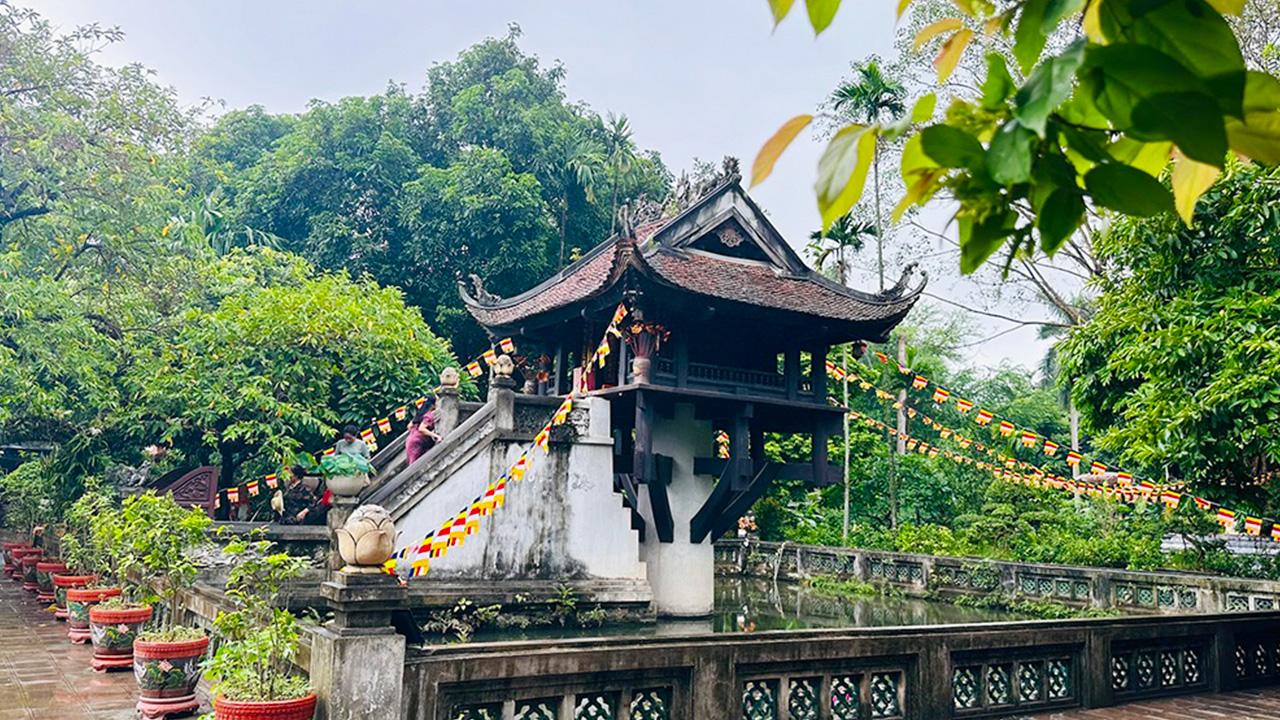
Architecture of One Pillar Pagoda
Reflecting back on its history, the One Pillar Pagoda stands as a testament to enduring architecture adapted through time. Essential to this is its iconic lotus design metaphorical as it is aesthetic awaiting deeper exploration into its symbolic features and structural ingenuity.
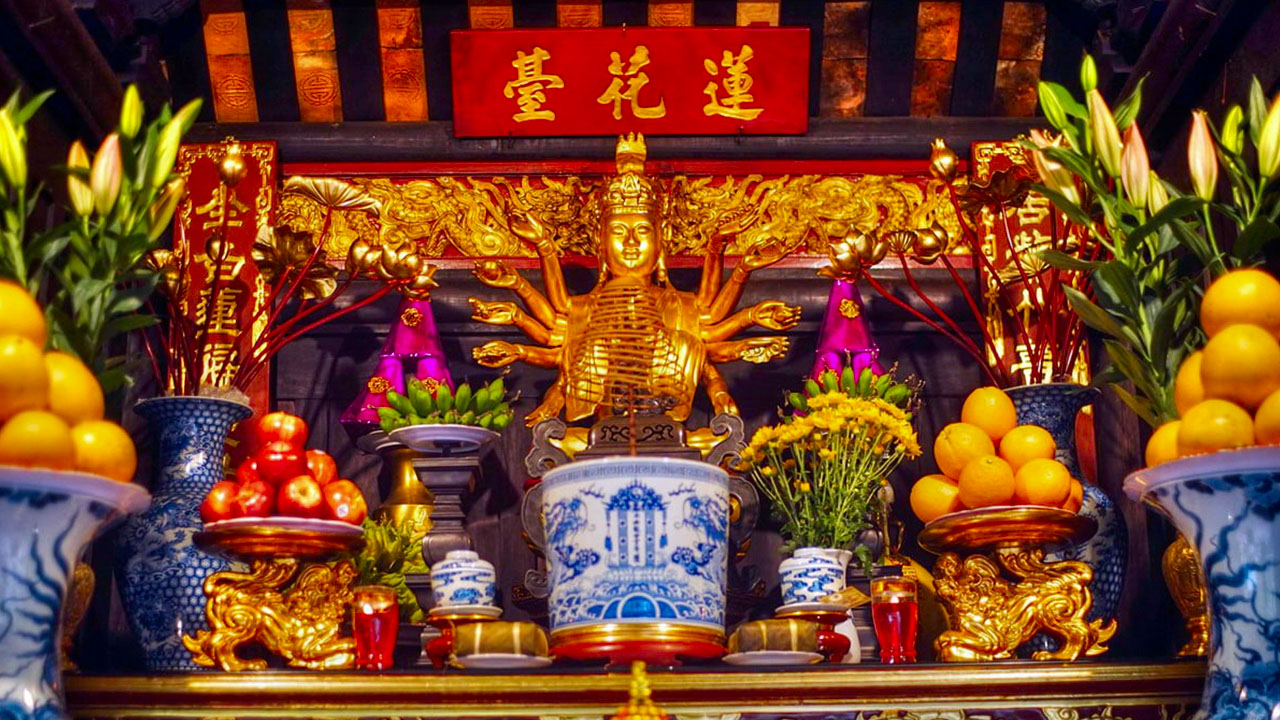
Unique Design Features
The One Pillar Pagoda’s design is a fascinating blend of simplicity and symbolism, creating a unique cultural monument amid Hanoi’s landscape. The architecture is inspired by a lotus blooming in the water capturing the Buddhist metaphor of rising from the mud to achieve enlightenment and purity. The pagoda prominently features a single stone pillar, approximately 4 meters in height, supporting a small wooden structure that represents a lotus.
Unlike other religious structures, the pagoda’s minimalist style enhances its symbolic meaning. Its foundational design, supported by a single pillar, represents the stem of a lotus flower. This elevates the overall structure standing above a small pond as it emulates the natural growth of a lotus from muddy waters, a concept resonating deeply in Buddhist teachings.
The aesthetic journey the pagoda presents cannot be understated. Visitors find themselves immersed in a serene reflection, facilitated by the surrounding lotus pond. This body of water not only completes its design but also invites personal reflection and spiritual contemplation. The stillness of the pond augments the iconic visual of the pagoda, creating an oasis of peace amid the bustling city.
Crafting such a structure demanded architectural ingenuity. Its original wooden construction required an intimate understanding of traditional building techniques. Later renovations have ensured durability while maintaining the initial aesthetic charm, proving that historical integrity and modern resilience can coexist beautifully. This blend renders the pagoda not just a spiritual site, but an artistic marvel.
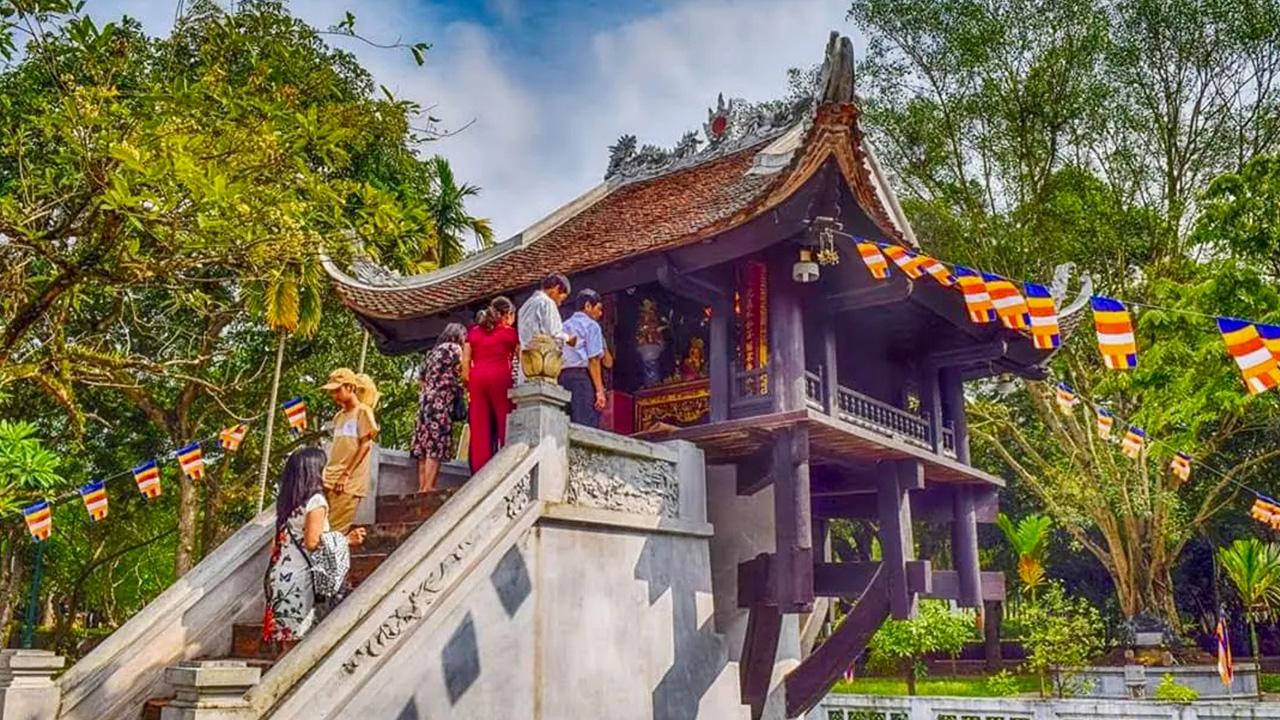
Symbolism of Lotus in Architecture
The symbolism of the lotus in the One Pillar Pagoda’s architecture transcends aesthetic design and delves into the spiritual philosophy embedded in Vietnamese Buddhism. The lotus flower, central to the pagoda’s theme, epitomizes purity and spiritual enlightenment. It illuminates the concept of rising from the depths of suffering to achieve a higher state of being a core Buddhist aspiration.
The use of the single stone pillar is not just a means of structural support but a symbol itself. This pillar is metaphorically seen as the lotus stem, anchoring the pagoda above the water, which denotes the murky, material world. The practice of elevating spiritual structures parallels the lotus’ journey from the mud to bloom in the sunlight. This concept is integral to Buddhist teachings on spiritual evolution and purity.
In examining the aesthetic, the surrounding pond plays a pivotal role. The clear reflection of the pagoda on the water underscores its symbolism mirroring the duality between the physical and spiritual realms. This peaceful setting propels visitors into meditative thinking, offering a palpable connection to Vietnam’s religious and philosophical heritage.
The pagoda’s choice of a lotus motif is no coincidence. The lotus, in its purest form, is a recurring motif in Buddhist art and architecture. Its presence at the pagoda acts as a constant reminder of the teachings of compassion, resilience, and enlightenment. The design becomes a medium through which visitors can engage with these philosophical tenets an interaction with both art and mindfulness.
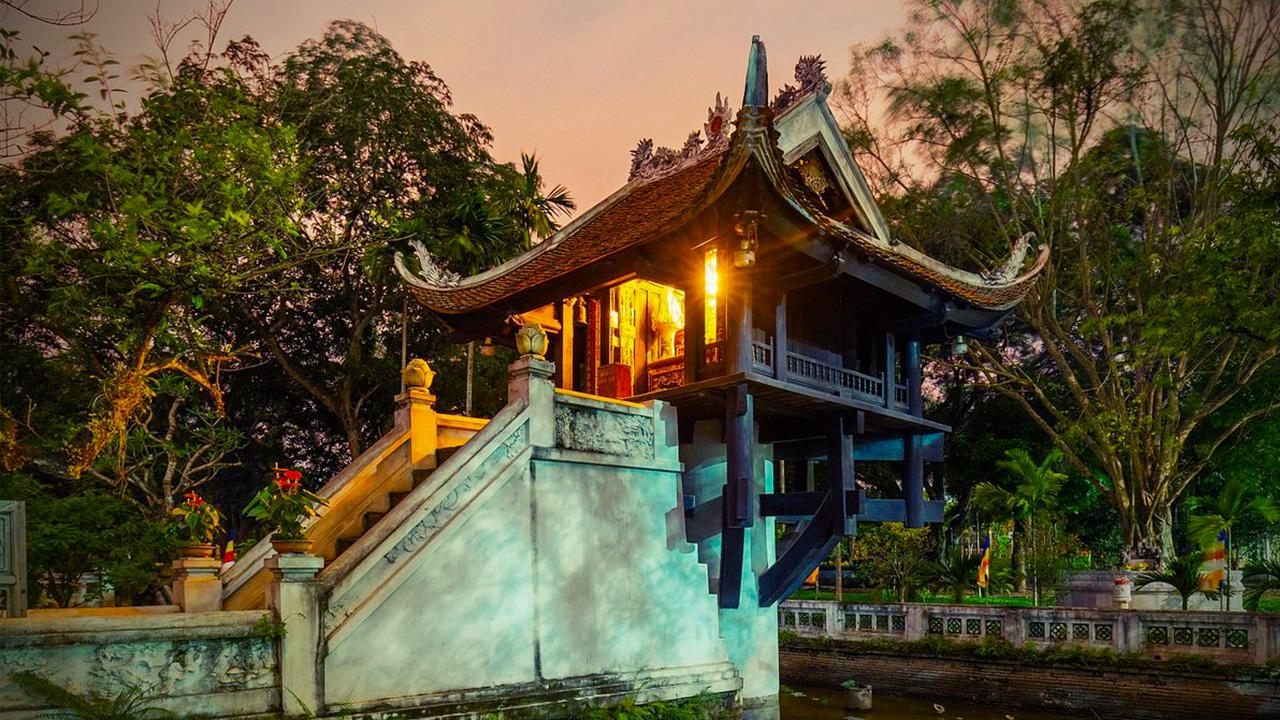
Visiting One Pillar Pagoda
Standing as an architectural gem, the One Pillar Pagoda invites exploration not just of its visual beauty, but its access points and practical details for potential visitors. Understanding these elements adds depth to one’s experiential journey in this serene haven.
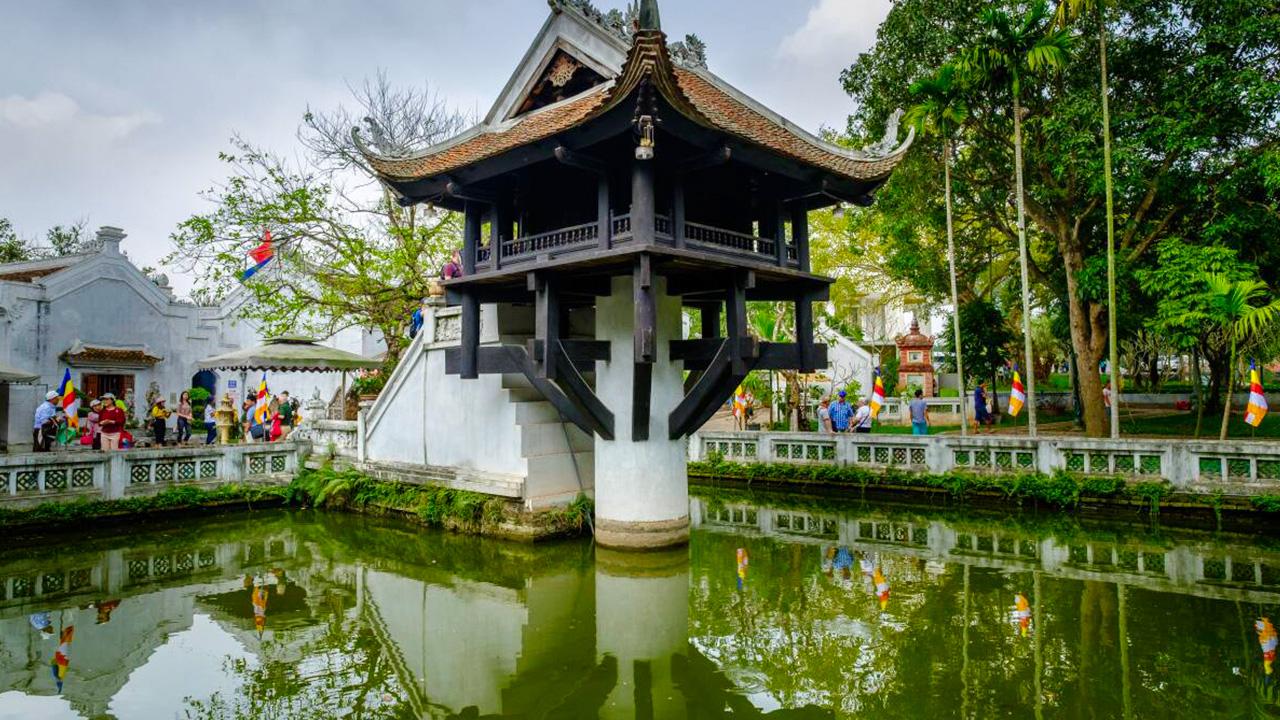
Location and Accessibility
Located centrally in Hanoi’s Ba Dinh District, the One Pillar Pagoda is part of the greater complex that houses the Ho Chi Minh Mausoleum. It is situated in a strategic place that is easily accessible both by public transportation and private vehicles, making it a prime destination for tourists and locals alike.
Taxis offer the most direct route to the pagoda, providing convenience for those unfamiliar with the area. Public transportation options such as buses serve as an economical alternative. Routes like 09, 22, and 33 have stops within walking distance to the pagoda, making it accessible without hassle from various city parts. Moreover, these buses are an authentic experience for those keen on experiencing local day-to-day life.
Once on-site, the pagoda’s location allows for a peaceful experience amid the bustling city. The surrounding gardens offer a tranquil environment to complement the visit. This proximity to significant sites like the Ho Chi Minh Mausoleum provides a fuller cultural experience an opportunity to explore Vietnam’s political and spiritual heritage side by side.
Parking options are available for those traveling via personal vehicle or rented cycles, though understanding Hanoi’s traffic dynamics is beneficial. The short walk from these parking areas to the pagoda sets the stage for a serene entrance a contrast to the vibrant life of Hanoi that surrounds it.
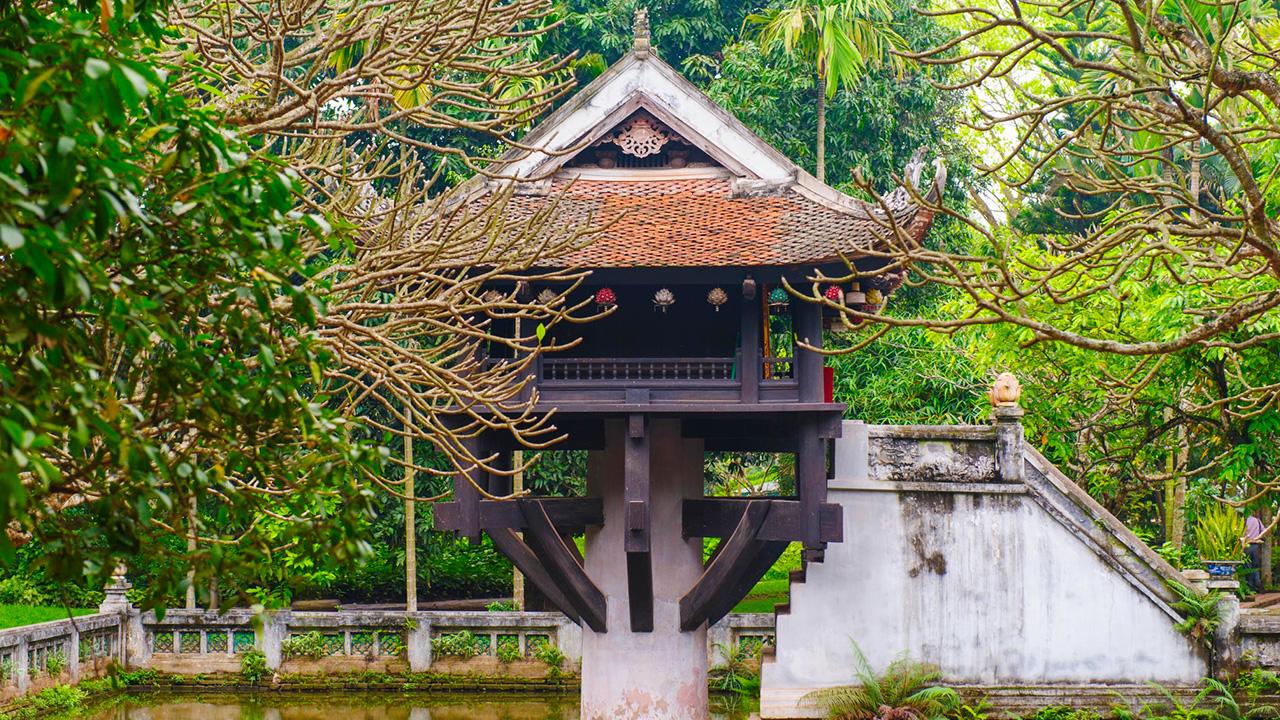
Opening Hours and Entrance Fees
The One Pillar Pagoda is open to the public from 8:00 AM to 5:00 PM daily, providing ample time for visitors to explore its serene environment. It is advisable to visit early in the morning or later in the afternoon to avoid crowds, ensuring a tranquil experience. The admission policy is welcoming; entrance is free for Vietnamese citizens while international tourists are charged a nominal fee of approximately 25,000 VND (around $1 USD), ensuring accessibility for all.
An encounter with the pagoda is more than just sightseeing it is a chance to engage with its spiritual ambiance. As a living site of worship, it draws many who seek blessings or moments of personal reflection. This dynamic atmosphere is best appreciated when not pressed by large groups, hence understanding the flow of visitors enhances the experience.
Etiquette suggests dressing modestly, respecting the sacred nature of the site by covering shoulders and knees. Such cultural sensitivity not only enriches the individual experience but also respects the local traditions and the pagoda’s spiritual importance. This respect allows a deeper connection with the cultural essence of the site.
The affordability and openness of the One Pillar Pagoda make it an inclusive cultural site, welcoming individuals and families from all walks of life. Its continued preservation through public contributions and government initiatives highlights its valued position in Vietnamese culture, presenting a model of spiritual and historical appreciation.
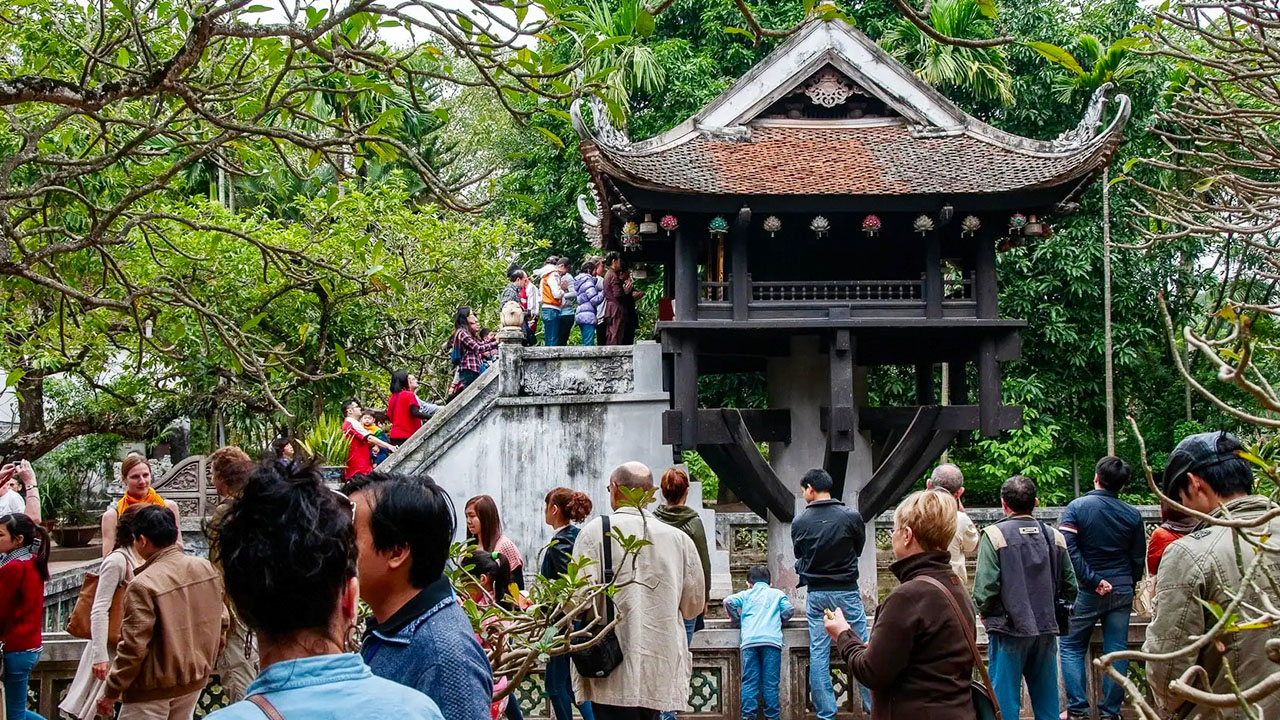
Cultural Significance of One Pillar Pagoda
Beyond its architectural allure, the One Pillar Pagoda holds deep cultural significance in Vietnamese Buddhism, representing more than just a historical relic. Understanding its role in spiritual practices and community life enriches the visitor experience and connects modern-day Vietnam with its profound historical roots.
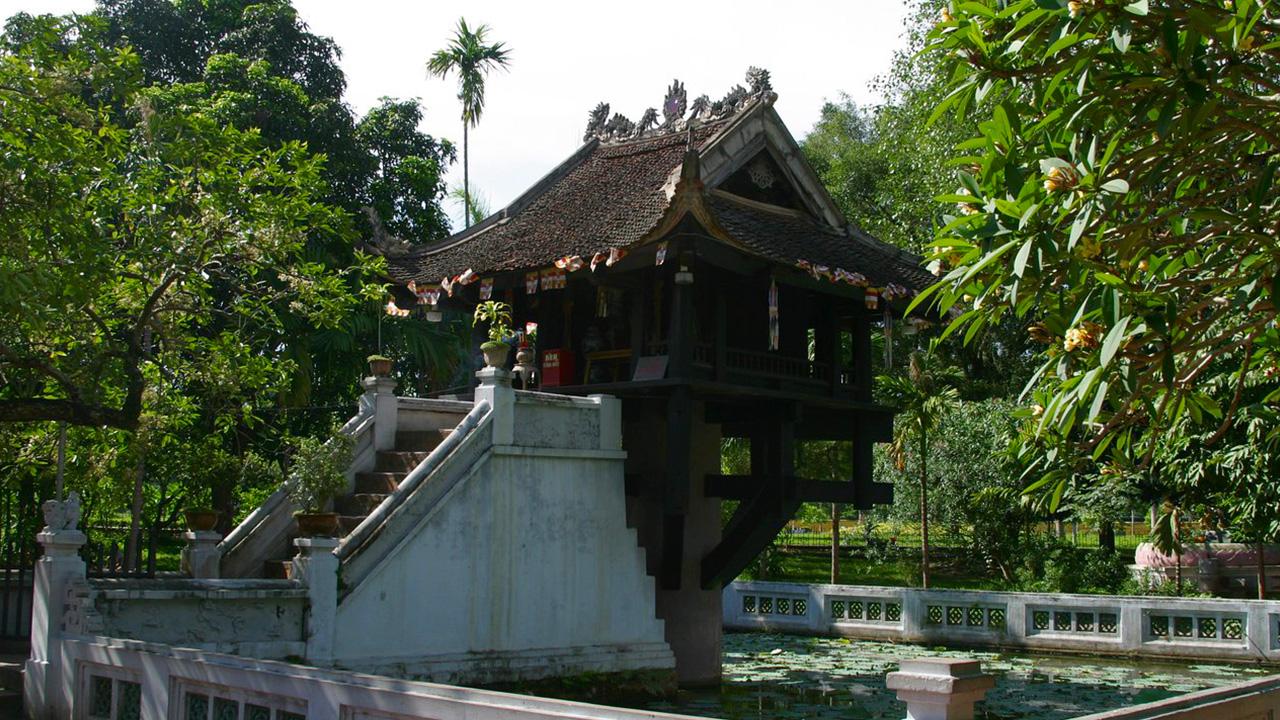
Role in Vietnamese Buddhism
The role of the One Pillar Pagoda in Vietnamese Buddhism is profound, acting as a beacon of spiritual enlightenment and religious devotion. Constructed in honor of the Bodhisattva Avalokiteshvara, the pagoda represents mercy and compassion, resounding themes in Buddhist teachings. Within its walls, pilgrims engage with these philosophies through prayer and meditation, fostering personal spiritual growth.
As a living symbol of Vietnamese spiritual heritage, the pagoda offers a physical space for ritual and contemplation, manifesting the principles of love and compassion that are central to Buddhism. Its unique design is a constant reminder of the potential for transcendence, motivating visitors to seek higher understanding and mindfulness.
The pagoda serves not only as a spiritual center but also as a historical testament to Vietnam’s enduring religious culture. It stands strong against external influences, maintaining local traditions and continuously serving the community by offering a space for both religious ceremonies and personal reflections. Each visit reaffirms its place as an unwavering pillar of cultural and spiritual identity.
Its integration into Buddhist life in Vietnam underscores the enduring commitment to cultural preservation and religious practice. Through this integration, the pagoda stays relevant to contemporary society, endlessly attracting scholars, devotees, and tourists who wish to dive into the depths of its spiritual and cultural story.
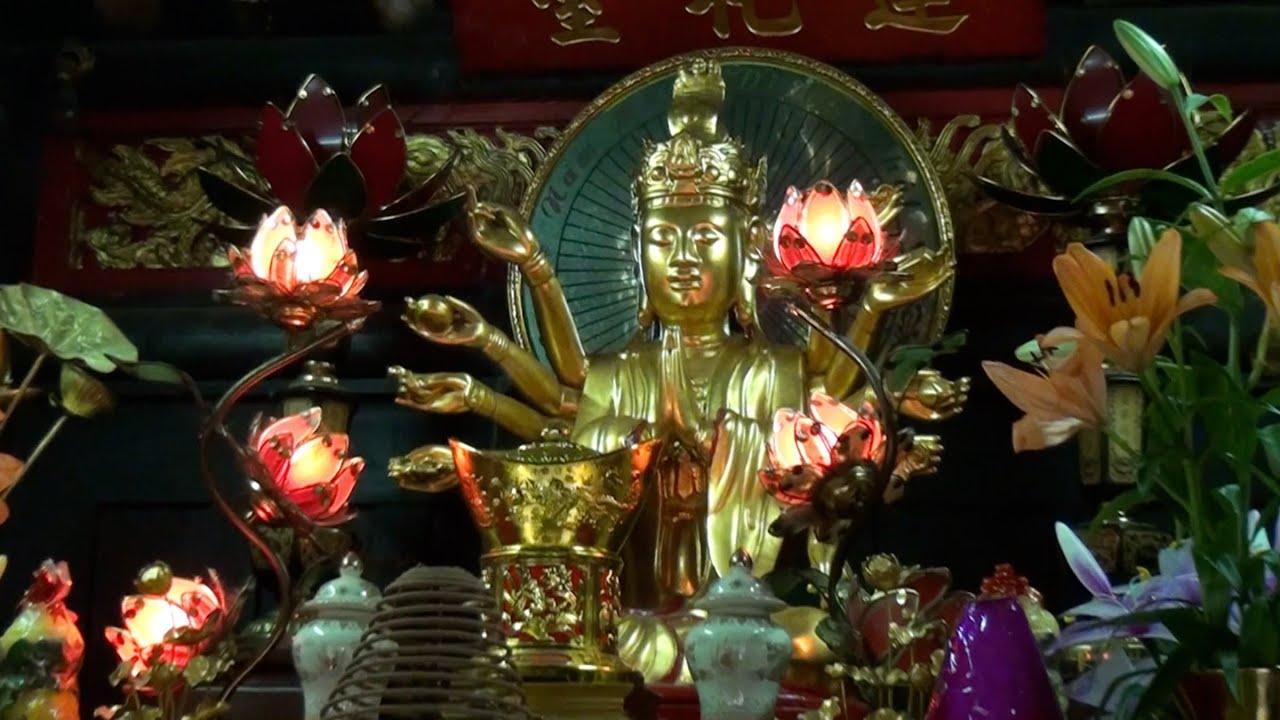
Festivals and Ceremonies
Festivals and ceremonies at the One Pillar Pagoda are vibrant expressions of Vietnamese religious and cultural identity. During Buddha’s birthday, Wesak, the pagoda transforms with an array of decorations, including flowers and lanterns, becoming the epicenter for religious rituals and festivities. This celebration symbolizes rebirth and enlightenment, concepts deeply embedded within Buddhism.
Special ceremonies occur on full moon days, drawing pilgrims and visitors for reflection and blessings, further reinforcing the pagoda’s role as a spiritual sanctuary. Such events allow individuals to congregate around shared cultural practices strengthening community bonds and instilling a sense of spiritual unity.
The Lunar New Year, or Tết, marks another significant celebration. During this time, the pagoda becomes a focal point for prayers, where people gather to find auspicious beginnings and fortune for the coming year. These gatherings reflect a blend of spiritual hopes and cultural customs, enhancing the pagoda’s ambiance with music, offerings, and chanting.
Visitors can engage actively during these events, witnessing traditional Vietnamese culture infused with spiritual devotion. The atmosphere becomes charged with collective energy, offering a unique glimpse into the intersection of religion and cultural festivity, highlighting the pagoda’s importance in Vietnam’s spiritual and cultural narrative.
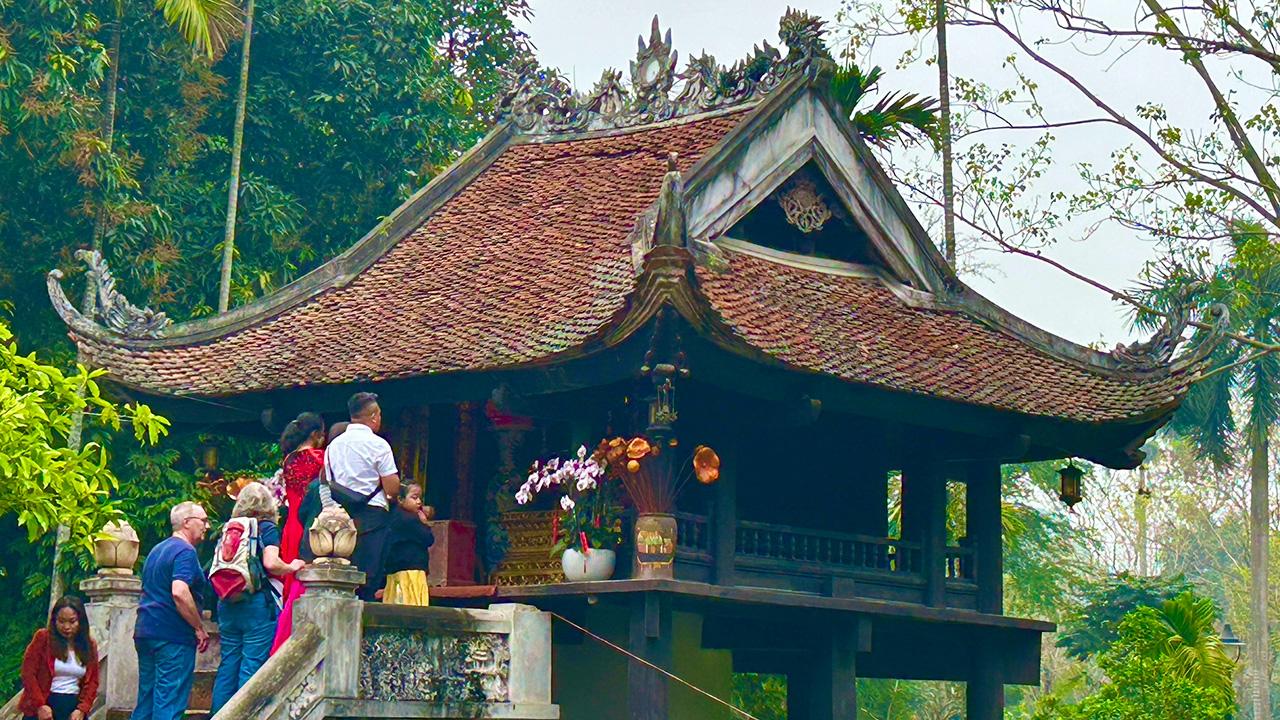
Nearby Attractions to One Pillar Pagoda
The One Pillar Pagoda, steeped in cultural richness, is strategically situated near several other significant attractions. These proximal sites extend the cultural exploration within Hanoi and offer a multidimensional view of Vietnam’s historical and modern appeal.
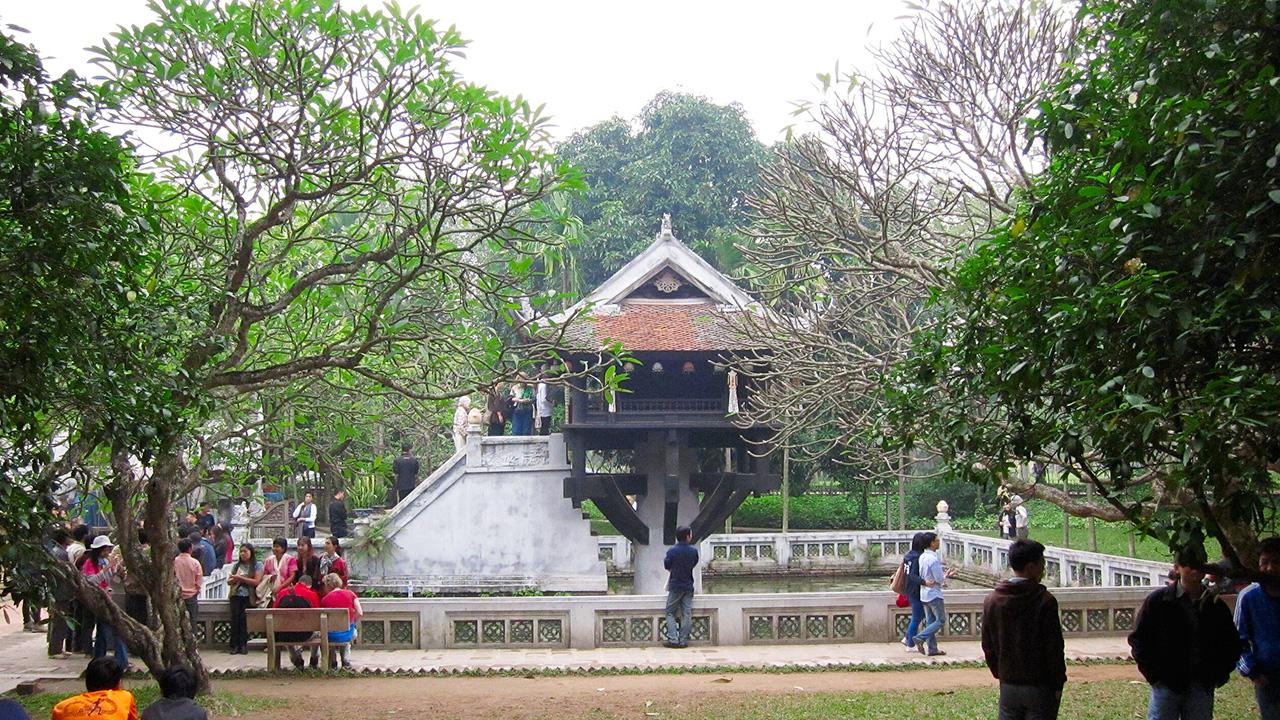
Ho Chi Minh Mausoleum
Just a short distance from the One Pillar Pagoda lies the Ho Chi Minh Mausoleum an imposing site of great national significance, marking the resting place of Ho Chi Minh, Vietnam’s revered former leader. Constructed with assistance from Russia between 1973 and 1975, the mausoleum is an embodiment of socialist values and national pride, marked by its stark granite façade and solemn atmosphere.
Visitors are drawn not only to pay respects but also to explore the surrounding museum, rich with historical exhibitions that document Ho Chi Minh’s life and the country’s revolutionary history. These collections encompass a range of artifacts and multimedia displays that offer poignant insights into Vietnam’s struggle for independence.
The mausoleum’s spacious nature is accented by well-maintained gardens and expansive squares, providing a peaceful setting for reflection. Whether through guided tours or independent exploration, the experience of visiting the Ho Chi Minh Mausoleum offers a deep dive into Vietnam’s historical narrative, aligning beautifully with the spiritual journey found at the nearby One Pillar Pagoda.
The complex stands as a testament to national unity and perseverance, mirroring the cultural tenacity exhibited at the pagoda. This synergy bolsters the cultural depth accessible to visitors, making a visit to both sites an enriching endeavor.

Temple of Literature
Also in proximity to the One Pillar Pagoda is the Temple of Literature, an ancient site profoundly dedicated to Confucius and the cultivation of wisdom. The temple grounds are an academic and cultural treasure, housing Vietnam’s oldest university and paying homage to centuries of scholarly tradition.
Visitors are invited to wander through beautifully maintained courtyards and garden paths, each accented by traditional Vietnamese architecture and design. The temple complex features the notable Khue Van Cac Pavilion and stone steles inscribed with the names of accomplished scholars a testament to the country’s long-held prioritization of education and knowledge.
This site provides an illustrative contrast to the spiritual exploration offered by the One Pillar Pagoda, broadening the cultural context of the area. Engaging with both sites allows individuals to appreciate Vietnam’s blended approach to spiritual and intellectual pursuits, reflecting a balanced cultural landscape.
The Temple of Literature continues to be a vital cultural resource today, hosting events and celebrations that honor traditional Vietnamese scholarship. For visitors, exploring both the temple and the pagoda complements the experience of Hanoi’s rich cultural tapestry.
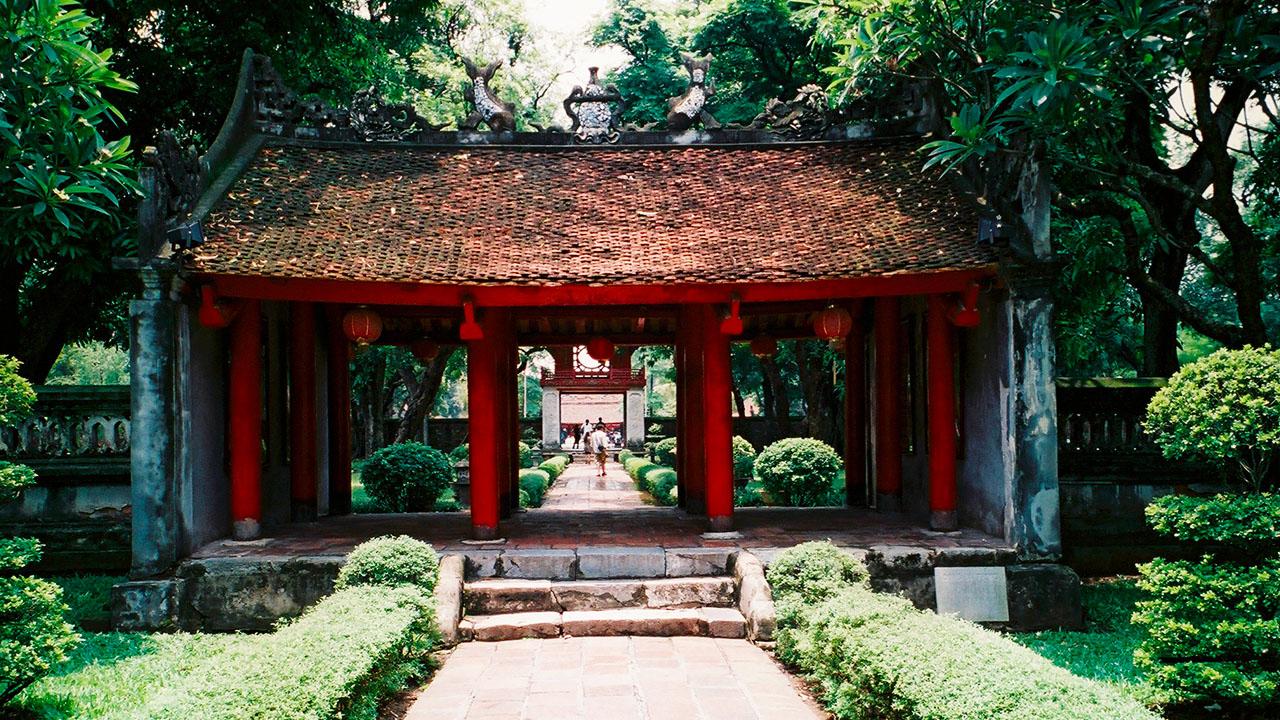
Travel Tips for One Pillar Pagoda
Exploring the nearby attractions alongside the One Pillar Pagoda offers a fuller experience of Hanoi’s cultural heart. Understanding the timing and nuances of visiting these sites can greatly enhance any journey.
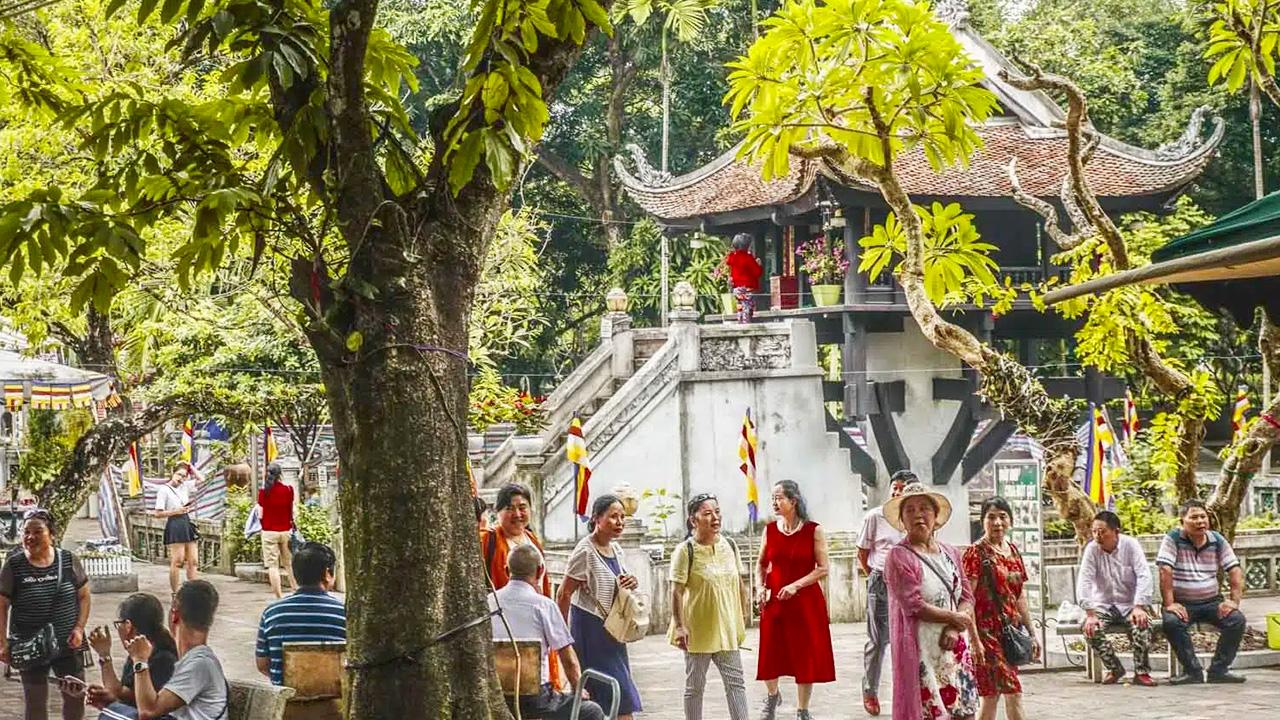
Best Time to Visit
Timing your visit to the One Pillar Pagoda can greatly enhance your experience. Ideally, plan to arrive in the early morning or late afternoon. These times not only offer cooler weather during Hanoi’s hot months but also provide a quieter, more serene environment away from larger tourist crowds. Weekends and public holidays can attract more visitors, so scheduling around these peak times may yield a more intimate visit.
Considering Hanoi’s climate, the cooler months from November to March provide a comfortable backdrop for exploration. During this period, the weather is more temperate, and the city’s ambiance is alive with local festivals and activities. Planning during these times adds cultural vibrancy to your visit and aligns with a broader exploratory itinerary.
Combining your visit with a tour of nearby landmarks, such as the Ho Chi Minh Mausoleum and the Temple of Literature, can fill the day with profound cultural insights. This broader approach offers deeper connections to Vietnamese culture, allowing you to appreciate the rich overlay of tradition, modernity, and spiritual depth inherent in the area.
Understanding the local climate and festive calendar can optimize your experience, enriching an already culturally dense journey with layers of understanding and appreciation. A well-timed visit ensures a rewarding exploration of both the iconic pagoda and surrounding historical attractions.
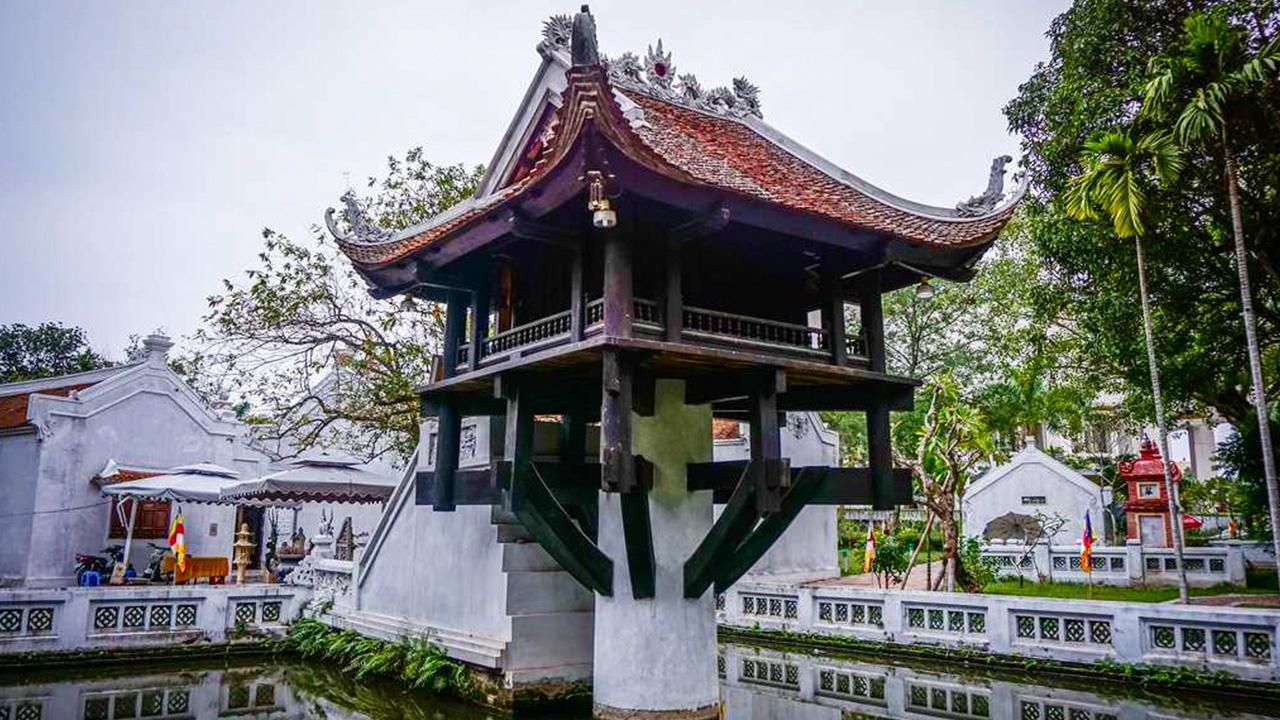
Dress Code and EtiquetteVisiting the One Pillar Pagoda requires mindful attire and behavior, especially given its significant religious and cultural status. Visitors are asked to dress modestly, with shoulders and knees covered displaying respect for the spiritual sanctity of the site. Artfully draped or layered scarves can be used to cover exposed skin, ensuring both comfort and cultural respect.
Quiet reverence is paramount during a visit. By maintaining silence and respecting ongoing prayers and rituals, you honor the peaceful ambiance intrinsic to the pagoda’s spiritual setting. It is also advisable to turn off or silence mobile devices, allowing uninterrupted reflection or meditation and preserving the sanctity for all visitors.
Observing local customs such as bowing slightly upon entering sacred areas is encouraged, as it aligns with traditional practices. While photographs are often permitted, they should be taken respectfully, ensuring minimal disruption to fellow visitors engaging in spiritual activities. Reverence for the cultural environment fosters a spiritually enriching encounter for oneself and other visitors.
These etiquette guidelines foster a meaningful connection to the site, allowing visitors to more deeply engage with its historical depth and spiritual significance. Adhering to dress codes and etiquette is not just a formality but enhances the cultural interchange experienced at this pivotal landmark.
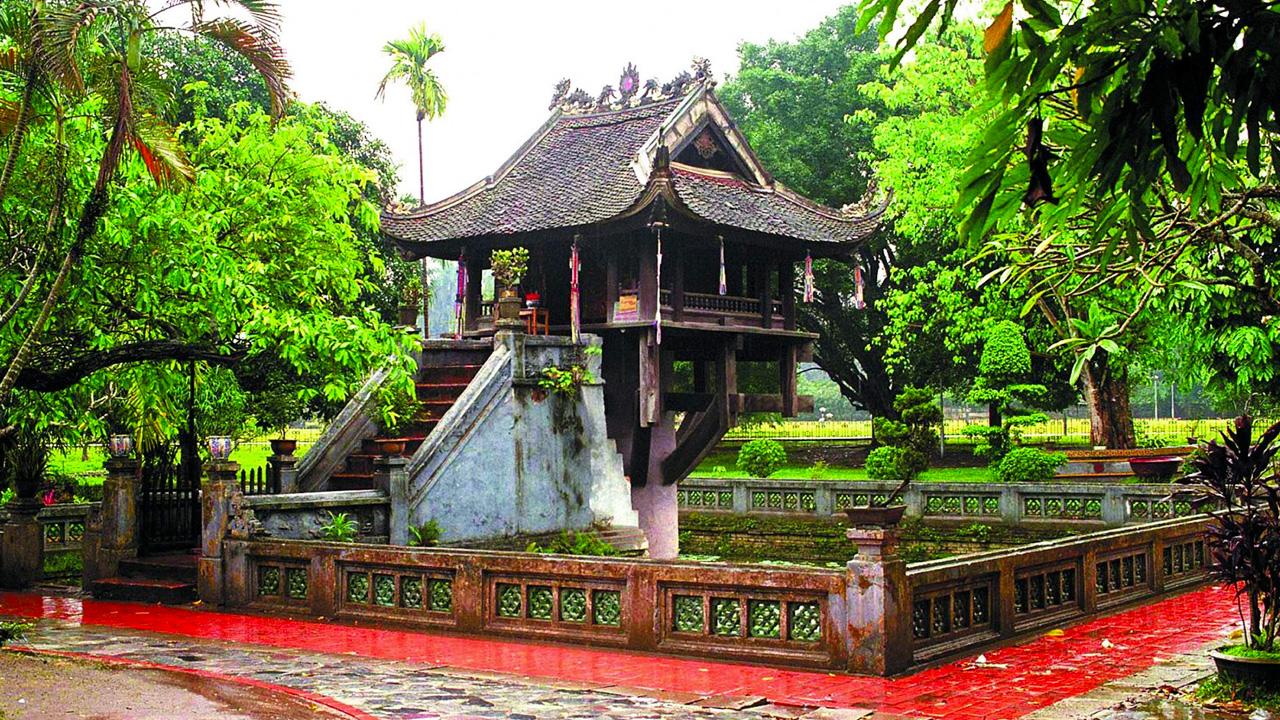
Frequently Asked Questions (FAQs)
- What is the historical significance of the One Pillar Pagoda?
- Built in 1049 by Emperor Ly Thai Tong, it represents spiritual enlightenment and gratitude, inspired by a divine vision.
- Can I visit the One Pillar Pagoda year-round?
- Yes, it is open daily from 8:00 AM to 5:00 PM, though visiting during cooler months or non-peak times is recommended.
- Is there an entrance fee for visiting the pagoda?
- Vietnamese citizens enter for free, while international visitors pay a nominal fee of around $1 USD.
- Are there any specific cultural practices I should be aware of when visiting?
- Modest dress and a respectful demeanor are essential; observing silence during prayer times is advised.
- What other attractions can I explore near the One Pillar Pagoda?
- Nearby cultural sites include the Ho Chi Minh Mausoleum and the Temple of Literature, enriching your visit with broader historical perspectives.
Key Takeaways
- Historical Roots: Built by Emperor Ly Thai Tong in 1049, inspired by Buddhist visions.
- Renovation Symbolism: Showcases resilience, especially post-French destruction.
- Design Features: Represents a lotus above water a key Buddhist symbol.
- Visiting Essentials: Best during cooler months; respect dress codes and silence.
Conclusion
The One Pillar Pagoda remains an enduring testament to Vietnam’s cultural and spiritual heritage an inspiring blend of history and symbolism. Its unique architecture, designed to reflect purity and spiritual ascent, continues to attract those seeking both peaceful contemplation and cultural enlightenment. Visiting this pagoda offers a deep connection to Vietnam’s past, inviting exploration of its narratives intertwined with Buddhist philosophy. As a centerpiece of Hanoi’s historical landscape, it bridges the ancient with the present, affirming its place as a must-visit landmark that promises a rewarding and introspective journey through history, architecture, and spirituality.


